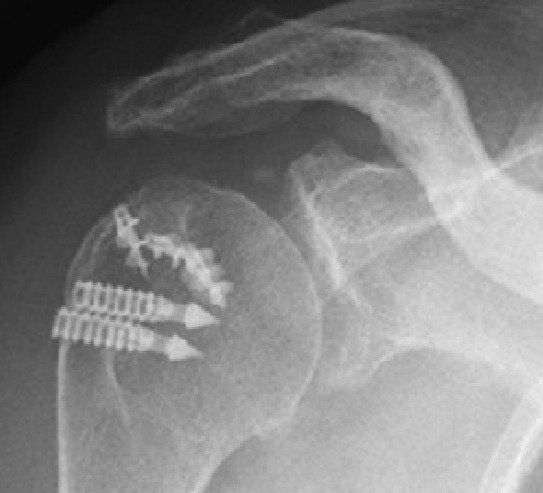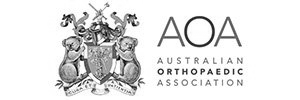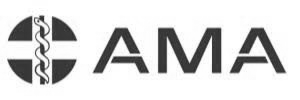Rotator Cuff Repair
What is a Rotator Cuff Repair?
Rotator Cuff Repair surgery is designed to resolve torn rotator cuff tendons.
- Partial Tears may only need a trimming or smoothing procedure called a debridement.
- Complete Tears required reattaching of a torn rotator cuff tendon to the head of humerus (upper arm bone) using stitching
The procedure is performed after appropriate diagnostic assessments, pre surgery checks and preparations are complete in a hospital. The procedure normally takes 90 minutes.
Types of Rotator Cuff Surgery
There are numerous surgical options for rotator cuff injuries, including:
- Arthroscopic Tendon Repair - surgeons use tiny camera (arthroscope) and tools to reattach the torn tendon to the bone during this procedure
- Open Tendon Repair - open tendon repair may be a better option in some cases. During these procedures, your surgeon will use a larger incision to reattach the damaged tendon to the bone.
- Superior capsular reconstruction -if the tear is not repairable, in the younger patient, surgeon may decide to bridge the gap between glenoid and top of humerus with a graft to give the chance to rest of the remaining intact rotator cuff tendons to function properly.
- Tendon Transfer - if the torn tendon is too damaged to be reattached to the arm bone, surgeons may choose to replace it with a nearby tendon.
- Shoulder Replacement - large rotator cuff tears may necessitate shoulder replacement surgery. An innovative procedure (reverse shoulder arthroplasty) installs the ball part of the artificial joint onto the shoulder blade and the socket part onto the arm bone to improve the artificial joint stability.
Rotator Cuff Repair Surgery Steps
The procedure is performed after appropriate diagnostic assessments, pre surgery checks and preparations are complete in a hospital. The procedure normally takes 90 minutes.
The procedure is normally performed under a general anaesthetic and includes the following steps:
- Small incisions are made to allow the surgeon access to the joint
- Using an arthroscope the surgeon visualises the affected area and looks for anomalies to determine the extent of the injuries
- Removes the front (anterior) edge of the acromion, bursal tissue and in some cases clavicle to increase subacromial space for the rotator cuff tendons (as required)
- Holes are drilled into the humerus to accommodate the suture anchors
- Repair to the cuff using sutures to anchor into the humerus bone
- Sutures from the anchors are placed in the torn ends of the rotator cuff tendons
- At the end the surgery the incision is closed and the patient is sent to the recovery ward for observation
Ancillary Surgery
Other pathology may need to be managed at the time of surgery to address other sources of pain and ensure a lasting result. These include:
- An arthritic Acromioclavicular (AC) Joint - that is clinically tender and arthritic small joint at the top of shoulder can be a cause of incomplete pain relief after rotator cuff repair. The surgical management involves the removal of bone from both the clavicle and acromion to create an 8mm gap that prevents bone the painful bone ends making contact. The AC joint ligaments are preserved as much as possible to maintain AC joint stability.
- Degenerate, frayed, dislocating or inflamed long head of bicep tendon: is removed from the joint. This may be achieved by releasing the biceps from the socket and letting it retract into the bicipital groove (tenotomy) or by shortening the tendon and securing into the proximal humerus (tenodesis). Tenodesis is favoured in the more active patients as it restores muscle length.
- Damaged Bicep Tendon, being removed from the joint.
Rotator Cuff Surgery Preparation
Once you and the doctor have decided that surgery is required, preparation is necessary to achieve the best results and a quick and problem free recovery.
- Infections - Treat any tooth, gum, bladder or bowel problems before surgery to reduce the risk of infection
- Smoking - Stop or cut down smoking to reduce your surgery risks and improve your recovery
- Weight - Consider losing weight (if overweight) before surgery
- Medications - Refrain from taking medications or dietary supplements that may increase your risk of bleeding - refer Medication Information
- Fasting - Depending on the type of anaesthesia used, your doctor may advise you to refrain from eating and drinking six to twelve hours before the procedure.
- Getting Home - You will not be allowed to drive yourself home after the procedure, so make arrangements for someone to pick you up. If you live alone, arrange for someone to check on you that evening or, ideally, to stay with you for the rest of the day.
- Loose Clothing - If you're having surgery, wear loose, comfortable clothing, such as baggy gym shorts and slip-on shoes, so you can easily undress and dress.
Returning Home After Surgery
When you go home you need to take special precautions around the house to make sure it is safe. Your post operative plans should include:
- Mobility or Stability - changes (rails in your bathroom, ramps for stairs)
- Sleeping - modify your sleeping arrangements (especially if you are sleeping upstairs) for easy access
- Access - ensure you have easy access to food, water, medications and any other essentials
- Showering - will be allowed once the wound is healed, or as indicated
Assess your home situation to ensure you have adequate home support in the first few weeks following surgery. If you live alone it may be necessary to arrange a package of community care to help during the first few weeks at home.
Rotator Cuff Surgery Process
Rotator Cuff Rehabilitation Program
Rotator Cuff Risks & Complications Associated
Surgical Follow Ups
How Risks Are Minimised
Get Moving Quickly
Early mobilisation is a major preventive measure. We strongly encourage you to get moving and out of bed as soon as possible after the operation to restore normal blood flow in the legs.
You should aim to do at least ten short walks (of between 2 and 5 minutes) each day in the first two weeks after surgery.
How Can I Minimise Post Operative Complications
Blood clots (DVT or PE)
Some patients may require a number of treatment measures to reduce the risk of blood clots. These include
- Injections of heparin during and after surgery,
- Sequential calf compression device (SCD) whilst on the operating table, and
- Special leg stockings (TEDS)
As a result of these measures, we have never had a patient develop a deep venous thrombosis. Any patient who is at high risk of a blood clot (such as a history of blood clots or clotting disorders) may be asked to continue heparin (Clexane) injections for 10 days after the surgery in addition to the other measures. This can be done at home, and we will show you how.
What Are the Consequences of Surgery?
Sometimes the potential risks and consequences of your surgical procedure need to be weighed against the benefits of a successful surgical outcome.
Like most surgery these benefits can include:
- Freedom from pain
- Increase movement
- Greater Flexibility,
- Maintained Independence
- Improved outlook, and
- Longer more enjoyable life
Although the recurrence of the presenting problem is not very common, after surgery, you would need to follow preventive measures.
It is important to avoid high impact activities during the early phase of recovery to minimise the risk of further injury. If there are any postoperative concerns or pain, please do not hesitate in contacting our rooms.






